
Have you ever been to a place that has utterly overtaken your soul… and you didn’t have the faintest desire to resist? A place that seeped into your bloodstream? A place that you fantasize about on a daily basis from afar? A place you know you belong? I love to travel and see new places, but when I visited Italy 6 years ago, I experienced a perspective shift; I connected with it on such a profound level that I couldn’t form it into words at the time. That trip lasted less than a week, but my next trip in 2014 stretched over 3 glorious weeks, and my love affair continued… When I got home, I was thoroughly, completely depressed. I had breathed in the Italian culture and never exhaled– and I didn’t want to. I meant to write a blog series after that trip highlighting Italian desserts, but I never finished my thoughts and inexplicably never re-created the pastries; I just couldn’t wrap my head around the impact that Italy had had on me. I think I sort of stuffed away the feelings and the overwhelming love that I had developed because it was just too hard to keep being so far away.
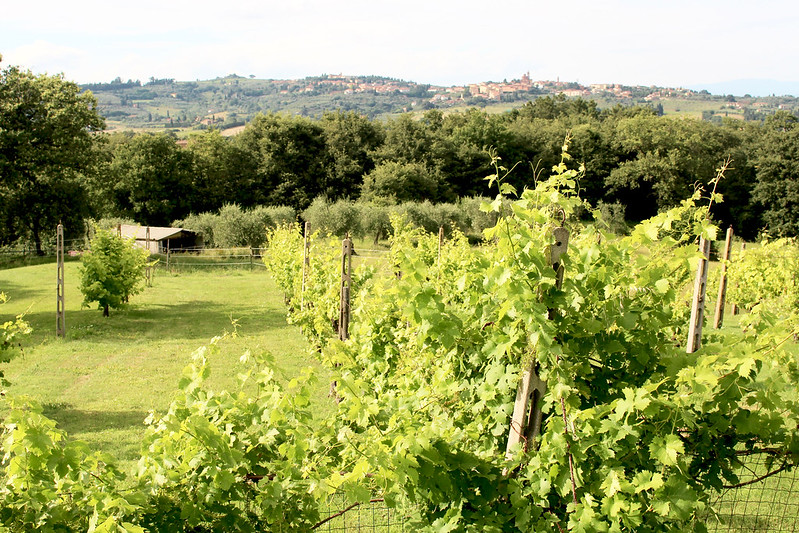
Vineyards at Villa Scopetello in Sinalunga, Tuscany
My most recent trip last summer also lasted 3 weeks, and it predictably reignited that fervent love for Italy. I’ve learned a tremendous amount about Italian cuisine in the past 2 years, and I also started studying the Italian language before that trip– I wanted to be ready to take it in and absorb as much as possible, and even talk to people! The differences between Italian and Italian-American culture and cuisine really hit me this last time, and I realized that it’s the former that tugs at my heartstrings. While the Americanized version has its charms and endearments in its own right, it has in some ways become a caricature of the simple and beautiful essence of Italy, and I long to be wrapped up in a comfy Italy cocoon.
Italy is a country of very high highs and very low lows; it makes you suffer to experience its beauty– I cannot describe it more accurately than that. For me as a traveler, there is nothing more ethereal than gazing upon a 2,000-year-old Roman ruin or digging into a plate of perfectly al dente pappardelle ai porcini, and conversely, there is nothing more infernal than the lack of information/assistance, the inconsistency of everyday things functioning properly, or the maddening pace of traffic and carelessly whizzing Vespa scooters. Similarly, the people seem to either give you the shirts off their backs or they make it abundantly clear that they don’t give two shits about you (such as the bartender in Positano who said the ice machine was broken when I asked for some ice to cool down my swollen ankle… immediately after serving cold drinks to customers). You will often arrive at the most beautiful of destinations, and the agony that you just went through to get there will quickly melt away and make you savor it all the more.

Pappardelle ai Porcini at Hotel Grand Vesuvio, Sorrento
I am a lover of languages. I am eternally fascinated by word roots and the diaspora of ancient Latin; frankly, etymology blows my mind. I’ve had so much fun learning the Italian language over the past couple of years, and I plan to continue doing so, so that I can improve each time I visit. I studied French through middle school, high school, and college; French was always touted as the “language of love”. Friends, I’m here to tell you: it’s all about Italian. This language is so melodic and animated and… straight-up sexy. Naturally, much of my vocabulary so far revolves around food! I’m enjoying learning how to wrap my palate around the sounds, and I especially love how words ending in -ella (mozzarella, sfogliatella, stracciatella…) linger on the tongue. 🙂 The thrill of conversing with shopkeepers last summer– asking about a special local cheese or a chef’s knife in the display window– was such an empowering feeling. It is such an expressive language, with its musical cadence and flamboyant word endings (bellissima!)—not to mention the well-documented accompanying hand gestures that are just as important as the words themselves! Not surprisingly, there are many beautiful words and animated gestures to convey one’s pleasure, disgust, and all manner of other experiences connected to food. (I even feel like I write about Italian food with more excitement and exclamation marks…)
Due to Italy’s long history of being separated into city-states and kingdoms after the fall of the Roman empires until its unification into a single sovereign country in 1861, Italy’s cuisine is highly regional. A staple dish in one town may be unheard of several miles down the road, or may be prepared very differently. In my experience, I’ve never been anywhere where the people are prouder of their food than in Italy. Despite the regional differences, one value shared across the entire country is love and exaltation of food. Dishes are prepared with such care, and you can genuinely taste it. It was only in the most touristy areas like Cinque Terre that some of the food seemed rote and uninspired. People take such deep pride in the painstaking process of producing artisanal cheeses, balsamic vinegar, wine, salumi, and all sorts of items borne of Italy’s incredible natural resources. It seems like everyone knows how to cook well, as though it’s an inherent trait in the Italian genetic fabric. I wonder if there are Italians who can’t cook, and if so, is it roughly equivalent to being a squib in the Wizarding World of Harry Potter??
It was such a treat to hunt down the best regional dishes, and of course the best pastries! Some things like gelato are universal (although there may be slight variations); others are definitely best eaten close to home, like cannoli in Sicily. And sometimes you’ll find a dish by the same name in different places with vastly different preparations, such as the cacio e pepe pasta that I had in Siena (thick, hand-rolled pici noodles) vs. in Rome (rich, eggy tonnarelli)– both transcendent, just very different.
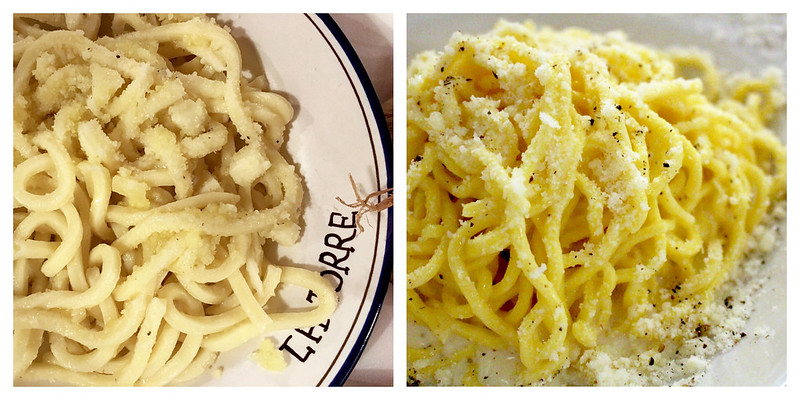
Left: Pici Cacio e Pepe at Trattoria La Torre in Siena; right: Tonnarelli Cacio e Pepe at Roscioli in Rome
The North features cozier food, like polenta and risotto, because it gets quite cold there and the terrain is mountainous, while the southern cuisine is highly influenced by invading cultures of the past like the Greeks and North Africans. The middle of the country also has its own micro-cuisines, such as the very distinct Roman cuisine with its spaghetti carbonara and penchant for using up all parts of an animal. Most of the traditional desserts in the northern areas were not my cup of tea (except tiramisù, torta di riso, and a few other things). There are a lot of dry cookies like biscotti and cantuccini (meant to be dipped in coffee), and the panforte of Siena— pass. The further south, the more I liked them, culminating with the aforementioned Sicilian cannoli. I found Southern desserts to be more colorful, festive, and elaborate– it’s not hard to see where American-Italian pastries originated (more on this in a sec). My absolute favorite, which I’ll be blogging about soon, is the flaky, crispy, semolina-filled, clamshell-shaped pastry from Napoli called sfogliatella riccia. *sigh*

Sfogliatella Riccia at Collina Positano Bakery, Positano
Integral to this love affair with food are freshness, local ingredients, and simplicity. Whereas French cuisine is steeped in complex technique, heavy sauces, and a gluttonous quantity of butter, Italian cooking is astounding in its modesty, its origins often rooted in the resourcefulness made necessary by poverty. The vibrancy of the tomatoes, the saltiness of the cheese, the piquancy of fresh herbs, and the fruitiness of freshly-pressed olive oil are all naturally occurring; they need no extra treatment to bring out their best flavors. Italian food is at its best when the natural flavors are allowed to shine in simple preparations. A lot of modern Italian food evolved from the diets of peasants, hence the lack of fancy techniques or pretentious ingredients (although some are expensive and difficult to find outside of the country, so they may seem a little extravagant on this side of the Atlantic).
I have to confess that while I could eat Italian food three meals a day for eternity, I haven’t historically been enamored with Italian pastries. More specifically, I don’t care for American-Italian pastries; they strike me as artificially flavored and colored, and often over-the-top in trying to imitate what it means to be “Italian” (like I mentioned above). I had been to Italy for a few brief trips prior to my 3-week sojourns in 2014 and 2016, but that was all before my infatuation with intimately studying food; I was curious to examine how much authentic Italian pastries resembled their American counterparts. Part of my dislike for Italian pastries is the heavy usage of almond paste; while I quite like almonds in their raw form, I detest the flavor of almond paste and marzipan products—they taste nothing like almonds to me! (That’s because they’re made from bitter almonds, not the sweet almonds that we normally eat.) I also can’t stand anise and I’m not a big fan of dried fruit, which are popular as well. What I found is that while I still don’t enjoy those flavors, the pastries in Italy are much more palatable, and there were even certain preparations in which I didn’t mind those odious tastes. When those flavors were not in play, I often found the Italian versions to be spectacular, like millefoglie (puff pastry cake layered with cream filling, pictured at the top of this post at Pasticceria Graziati in Padova) and semifreddo.

At L’Arte del Gelato in Verona, slices of pistachio and chocolate-hazelnut semifreddo, and a decadent chocolate-hazelnut semifreddo cake… that I want to shove in my face.
Perhaps this goes without saying, but the best discoveries were the ones that local residents told us about. In the Sicilian town of Taormina, we were directed to I Dolci di Nonna Rosa for cannoli by the kind gentleman at the front desk of our hotel. We walked past countless pasticcerie (pastry shops) with Italian pastries in the windows and display cases; but not one of them actually (surprisingly) emitted the wonderful aroma of baked goods, until we reached this one. We were advised to only eat cannoli that are filled to order; if they are pre-filled, they are of inferior quality and will likely be soggy from sitting for hours. Indeed, at I Dolci di Nonna Rosa, the chocolate-dipped and nut-studded cannoli shells were stored in covered cases to keep them fresh, and the lovely woman who helped us brought out a just-filled shell brimming with creamy ricotta filling and sprinkled with Sicilian pistachios. I’ve had many a cannolo (singular form of the plural cannoli) in my life, but one bite of this one confirmed that this was hands-down the best cannolo I’d ever had. The shopkeeper enthusiastically obliged my curious inquiries as to what was in this, and what was in that—these little morsels clearly made with so much love! I bought a few tiny tartlet-like items (crostatine = little tarts) filled with typical Italian ingredients like nutella and rum, and she proudly brought out a freshly baked tray of pastries filled with almond paste, insisting that we take one. I didn’t hate it, despite the almond flavor, and the dough part was lovely, all warm and soft. She showed us Sicilian pride and hospitality at its best!

Cannoli and various tartlets at I Dolci di Nonna Rosa
Now, not all of my food experiences were amazing. My husband and I took cooking “classes” (which turned out to be private lessons) with the chef in one of Montepulciano’s finest restaurants, Le Logge del Vignola, as part of a bed-and-breakfast package. I learned some cool tips about techniques and ingredients, BUT… I couldn’t believe the state of the kitchen. My first impression on Day #1 was that it wasn’t the cleanest, but I knew there was worse. We only made pasta and sauce that day, but on Day #2, we made ossobuco (veal chops), and were therefore handling raw meat. The chef placed the meat on the same cutting surface on which we had just cut vegetables. He then handled kitchen utensils, a pepper grinder, a container of salt (including reaching inside), and a bag of flour. I stared with saucer-wide eyes as he opened the flour bag and reached inside for a handful—never washing his hands the entire time! It took all my might not to hyperventilate as he continued to demonstrate the dishes we were making, all on the same unsanitized prep surface. We then used flour from the same bag that he had reached into with veal hands to make more pasta… on the same surface. I was speechless, and I desperately wanted to say something, but who was I to question the chef in his own kitchen?! (He had trained with Gordon Ramsey in England, and doesn’t Chef Ramsey yell at people about sanitation constantly? Or is that just on TV?) I was relieved when the other cook, who had been kneading bread dough in a separate area while wearing gloves, started to prepare the ingredients for tiramisu. I thought we were in the clear, which was especially important because it’s an uncooked dessert… but then we moved back to the first area to assemble the tiramisu, and the chef put the biscotti directly on the dirty cutting board. I was very hesitant about eating this meal, and I casually asked, “Is this how you prepare the food for the restaurant?” I was told that it was, which was a vague answer to a vague question. At that point we had already eaten two meals in this restaurant, so we figured that it would be okay if that’s how they always do it, but it was certainly against my better judgment. Fortunately, we ate a third delicious meal and survived somehow without getting food poisoning! I was completely appalled; sometimes I guess it’s better not to know…
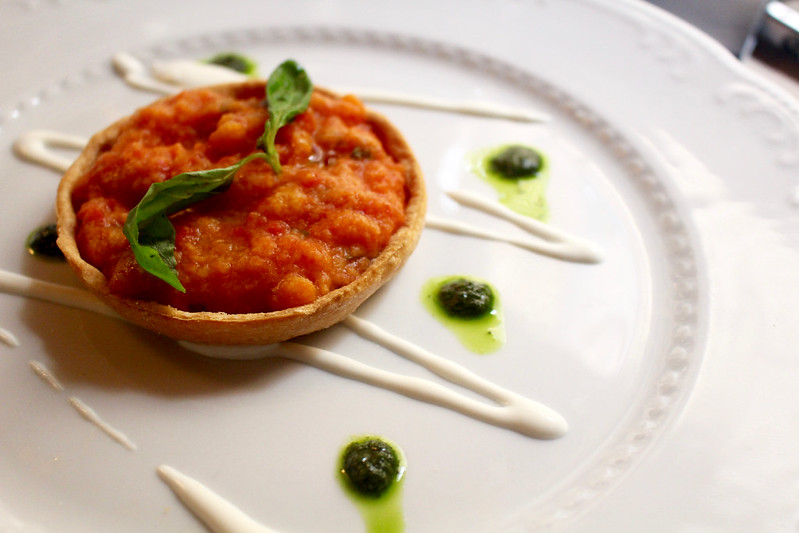
Semifreddo and Tomato Tartlet at Le Logge del Vignola
Anywho, every day in Italy was its own new adventure, and I loved each one, for better or for worse. I miss it *literally* every single day. After last summer’s trip, I was determined to finally put down my observations, thoughts, and feelings about Italy– and to make some of the regional dishes and desserts in my own kitchen! What better way to keep those memories fresh than to bring that amazing food to life at home? In the event that you’re wondering why it has taken me another year to start posting, it’s because some of these recipes needed to be reworked multiple times, and I finally feel like I can share them with confidence; this is something I really want to do right. In addition to the forthcoming recipes, I have these Italian and Italian-inspired recipes already on the blog:
- Cannoli Pound Cake
- Tricolor Cake
- Italian Chocolate Guinness Cake
- Orange Almond Ricotta Cheesecake
- Torta Sbriciolata alle Mele
- Baci di Dama
- Blondies with Salted Pistachios & Lemon
- Brutti Ma Buoni (Italian Pistachio-Chocolate Chip Meringue Cookies)
- Lemon Pecorino Pepper Cookies
- Brioche Ice Cream Sandwiches
- Cheesy Focaccia with Sautéed Spinach
- Blood Orange Tiramisu
- Milk Chocolate Malt Semifreddo
- Rhubarb Semifreddo with Pistachio Crumbles
- Mega Easter (Primavera) Pie
- Amalfi Ricotta & Pear Cake
- S Cookies
I’ve learned in my investigations that there are some pantry items that are very useful to keep on hand if you plan to bake Italian-style on the regular. At first, I wasn’t sure if it was worth shelling out the money for obscure and/or imported products, but once I realized that I want these items to be permanently in my baking rotation, I decided that it was well worth the investment. If you are interested in diving into Italian pastry, I highly recommend keeping the following in stock:
- “00” Italian flour: In Italy, flour is labeled based on the fineness of milling. “00” refers to the finest grind available in Italy, and this type of flour is used for pasta, pizza dough, and pastry alike (though in Italy there are varieties with different protein content for different applications, like American flour).
- Paneangeli Lievito Pane degli Angeli Vaniglinato: Pronounced ‘pa-neh-AN-jel-ee’, this is an Italian leavening agent with a hint of vanilla, which is similar to, but not quite the same chemical composition as American baking powder. (Paneangeli is a single-acting baking powder, whereas American baking powder is double-acting.) Depending on where you live, it maybe be somewhat difficult to track down, but not prohibitively so– it’s possible to find it at well-stocked Italian and international markets. I thought about experimenting with regular baking powder, but since it is also available on Amazon, I decided to just keep some on hand.
- Vanillina: Powdered vanilla flavor, which could possibly be replaced with vanilla powder, extract, or vanilla bean seeds, but my understanding is that it also contributes to the texture of the cake. (I do think it would be a worthwhile experiment to try substituting some form of pure vanilla…) This is also easily purchased on Amazon.
- Hazelnuts: Italy is gifted with a bounty of nuts grown throughout the land, including hazelnuts, particularly in the northern Piemonte region. Many pastries contain hazelnuts, often combined with chocolate. (Nutella, anyone?)
- Pistachios: Similarly, these bright green nuts are grown in the vicinity of Bronte, Sicily, and they are common in many Italian desserts, especially Sicilian ones.
- Pistachio paste: A dark green, silky paste made from pistachios, which is deployed in gelato, cakes, and other desserts. Pure pistachio paste is difficult to find in the States, but it can be ordered (here or here, for example, or here if you have a lot of spare change in your couch cushions). It is not cheap, but necessary for certain dishes. Beware of pastes with additives, preservatives, or flavorings, and take note that pistachio *paste* is a different product than pistachio *cream*. To be sure you’re getting the real thing, it’s best to go with a version labeled D.O.P. (more on that in a blog post coming later in this series). I did find this California Pistachio Paste as a probably good alternative, though I haven’t actually tried it.
- Candied orange peel: Candied citrus is found in cakes and many orange-scented desserts, especially around the holidays. Common American packaged versions are full of high-fructose corn syrup and other sweeteners; make your own or try to find some that is naturally made. If you live near San Francisco, you can find a lovely organic one at Bi-Rite Market. In New York, I found a glorious box at Buon Italia in Chelsea Market that begged to come home with me. 🙂
- Italian chocolate: Try one of the many good Italian brands of chocolate to make any Italian dessert just a little more authentic.
- Gianduja: As mentioned above, hazelnuts and chocolate are intimately acquainted in Italian cuisine. This is a chocolate-hazelnut infusion that can be found in paste or block form. It has a deep, rich flavor and creamy texture, and is found in a variety of desserts.
- Nutella: Originally called pasta gianduja, this is the chocolate-hazelnut spread that we all know and love. Obviously it is found throughout the Italian pastry realm, and it has crossed over into French and American desserts, and probably many other countries have borrowed it too!
- Good quality extra-virgin olive oil: If there is one pantry item more important than any other in Italian cuisine, this is it. Unfortunately, a lot of olive oil isn’t what we think it is (mislabeled, other oils cut into it, etc.), and it’s hard to know what you’re actually getting. The best way to ensure an authentic purchase is to look for that D.O.P. designation.
- Almond paste: Like I mentioned above, it’s not my thing, but it’s pretty ubiquitous in Italian baking, so you should probably get it. Gross. 😉
- Ladyfinger biscuits: There are two types of ladyfingers, Savoiardi and Pavesini. The former are the ones that most of us are familiar with, as probably 99 out of 100 trays of tiramisu are made with these. BUT– a friend in Italy introduced me to Pavesini, and they are, in my opinion, far superior. She advised me to use them in tiramisu, and she was so right. They soften, but they don’t get soggy, so you get beautiful, distinct layers of biscuits and cream, whereas tiramisu made with Savoiardi can end up a pile of mush. Savoiardi are easy to find in many supermarkets, and it’s fine to use them; Pavesini are unfortunately very rare in the States, though you can find them on Amazon. I’ve scoured the Italian markets in San Francisco without luck. If you find them, stock up and ration them very carefully…
- Fresh basket ricotta cheese: An item in the fridge rather than the pantry (Captain Obvious at your service), it is something integral to Italian food that just may change your life. If you’ve bought any ol’ tub of ricotta, you’ve tasted the sad, gritty stuff that passes for ricotta in this country. Fresh ricotta comes packed in liquid and needs to be drained, leaving behind the fluffy, creamy, slightly sweet cheese– a completely different animal than the common supermarket stuff. Local is best with a product this fresh; once I discovered Bellwether Farms Whole Milk Basket Ricotta made in Sonoma Country (just north of the Bay Area), I understood why Italians love their ricotta. Every morning of my life, I now eat a piece of toasted good-quality bread with a generous schmear of ricotta– with fried eggs on top on the weekends. Why am I telling you all this? Because when you make cannoli or Italian-style cheesecake, or any Italian dish that calls for ricotta, using fresh vs. the tub stuff makes a vast difference. Not that it’s cheap, mind you… but once you try it, you may never be able to go back.
You can substitute for some of these items some of the time, but many are accessible in international markets and/or online, so if you plan to get serious about Italian baking, try to go for the real thing.
Without further ado, it’s about time to bake some Italian desserts! I’ll start with one of my favorites, which hails from the northern region of Lombardia, then cover a number of other regions… then I might start all over again, who knows. Please join me on this meandering journey through some of Italy’s most delicious sweets! 🙂

Pizza al taglio (by the slice) at Gabriele Bonci’s Pizzarium, Rome

View of Positano from the beach below
© Dafna Adler & Stellina Sweets, 2017.







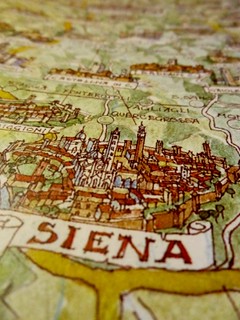
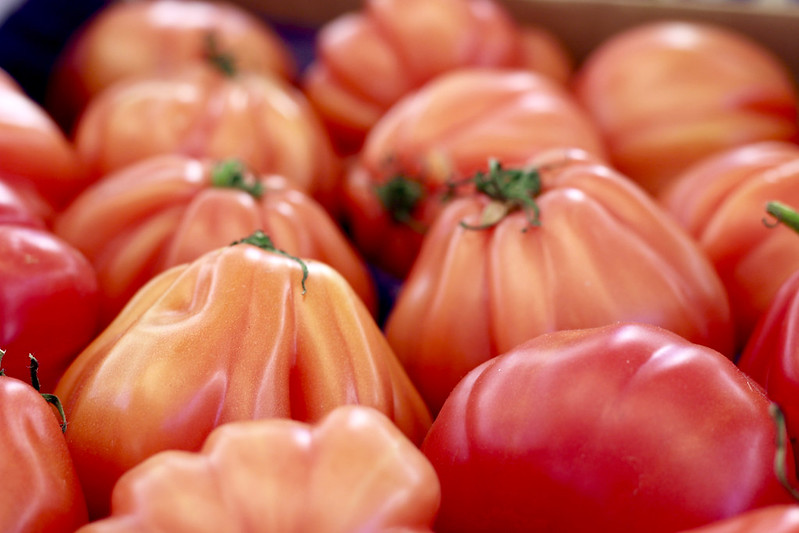
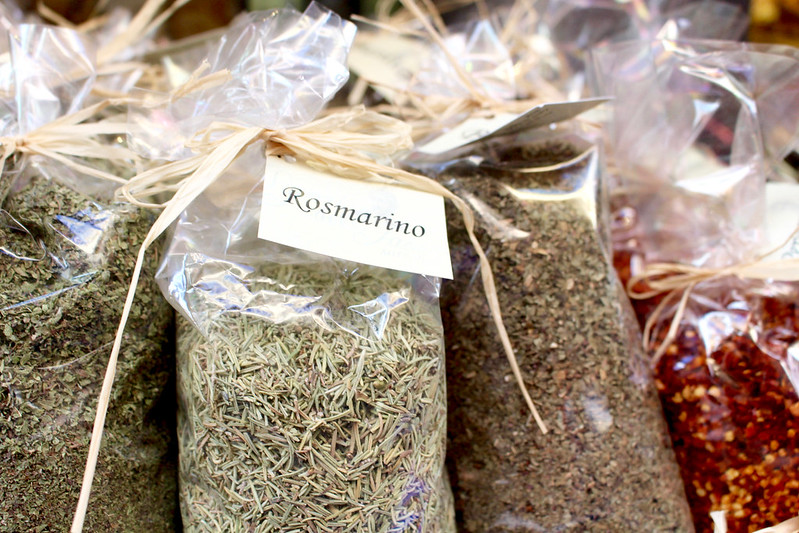
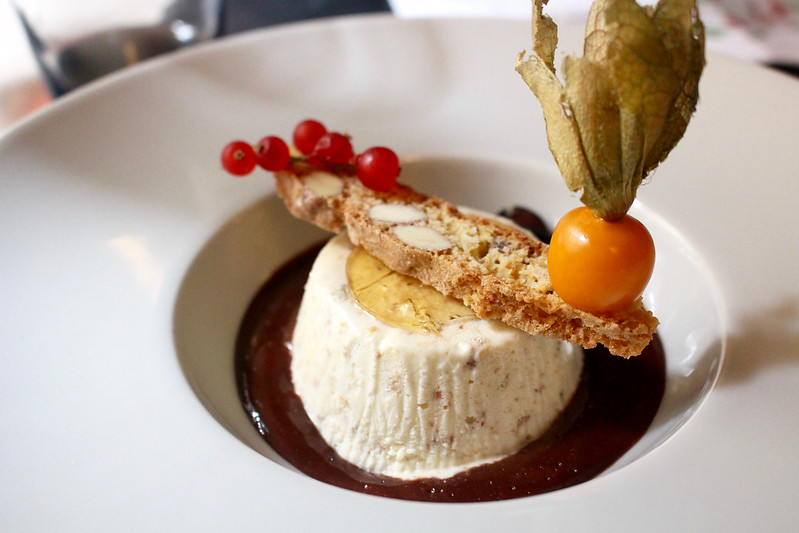




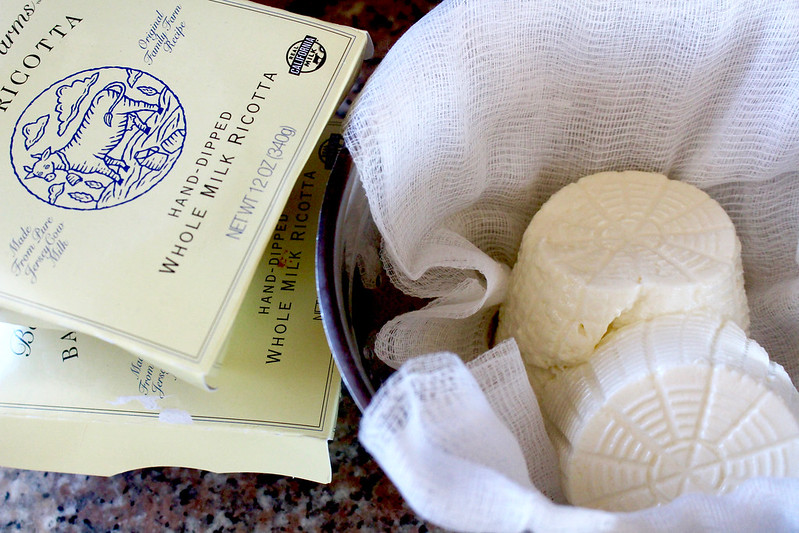












7 Responses